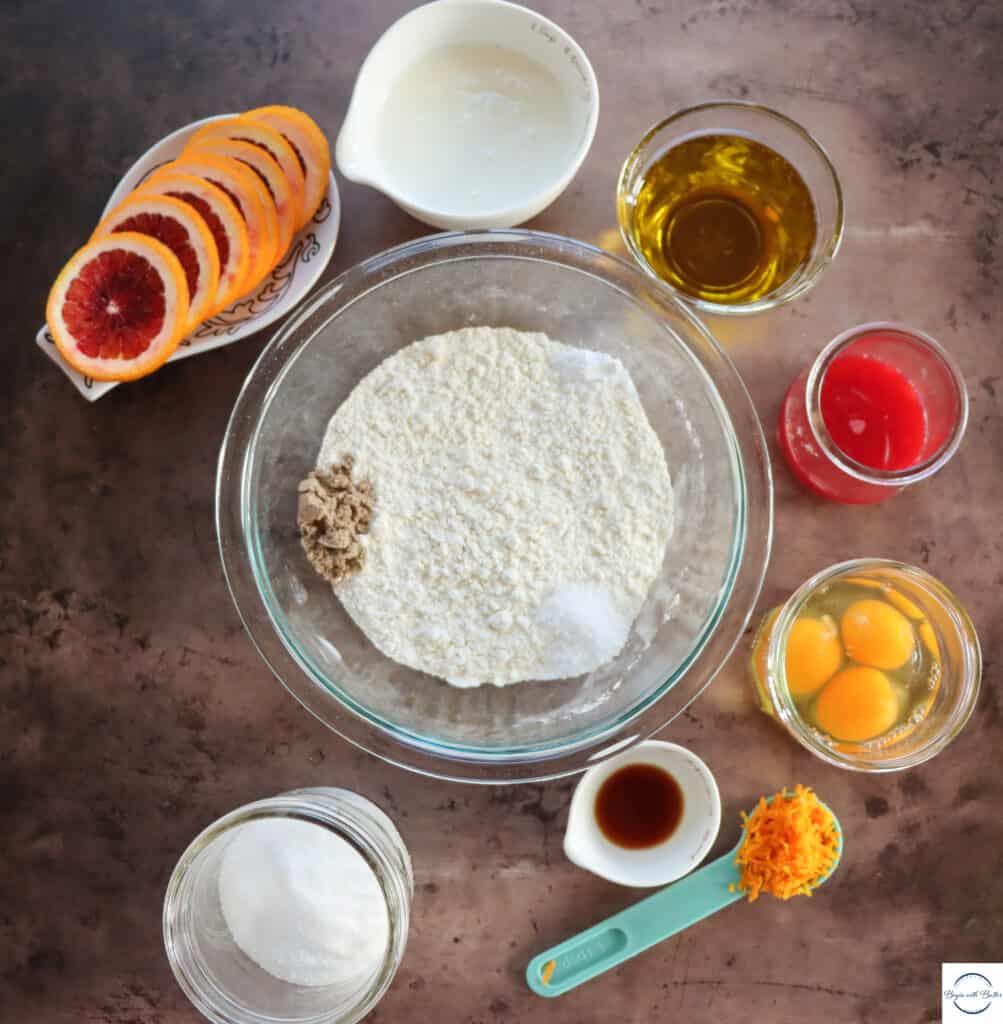This post contains affiliate links. While I receive a small commission if you purchase from these links, they are products that I use and trust in my own kitchen.
Any craftsman (or craftswoman… or craftsperson) can gather the tools of their trade. But it’s the understanding behind those tools—the precision, the intentionality—that separates the hobbyist from the expert.
I have Bundt pans that sparkle like showpieces, and sets upon sets of gleaming mixing bowls. But without the structure of metric measurement, all that beauty can quickly turn into a batch of sunken cakes and wasted ingredients. Pretty tools don’t guarantee pretty outcomes—precision does.
This post is part of the Baking 101 series on Begin with Butter, and it’s a special one: it contains the exact metric measurements that I use when I develop every single recipe you see on my site. From Lemon Pound Cake to Hot Cross Buns, these are the precise metric standards that I use to keep everything consistent, testable, and repeatable—which is what every baker deserves.*
In This Post:
Why I Use Metric in My Kitchen
Setting the stage with beautiful tools is wonderful—but without precision, they can’t do the work for you.
In my kitchen, I blend the warmth and tradition of home baking with the thoughtful structure of professional technique. It’s a hybrid philosophy that honors the joy and improvisation of baking for loved ones—but backs it all with precision, consistency, and intentional skill. It’s “the way” for people to both honor the traditions of their mothers and grandmothers, and elevate their own baking skills to levels previously thought impossible.
And metric measurement is the heartbeat of that hybrid approach.
Measuring with precision, using grams, eliminates the guesswork that makes baking such a conundrum for so many: a cup of flour can vary wildly depending on how it’s scooped (like in that video above!), but 128 grams of flour will always be 128 grams.
These conversions aren’t random. They’re the result of years of recipe development, consistent results in testing, and taste tests from very honest (sometimes painfully so) family and friends. This is what works best in my kitchen, and it’s what you’ll find in the recipes that are on this site.
My Standard Metric Measurements
Here’s a basic, no-frills metric conversion chart with my go-to metric measurements—organized by ingredient category so it’s easy to scan and use right in your kitchen.
Dry Ingredients
| Ingredient | Weight per Cup (grams) |
|---|---|
| All-Purpose Flour | 128 grams |
| Red Whole Wheat Flour | 113 grams |
| White Whole Wheat Flour | 113 grams |
| Bread Flour | 120 grams |
| Pastry Flour | 106 grams |
| Cake Flour | 120 grams |
| Cocoa Powder | 84 grams |
Sugars & Other Sweeteners
| Ingredient | Weight per Cup (grams) |
|---|---|
| Brown Sugar | 200 grams |
| Granulated Sugar | 200 grams |
| Powdered (Confectioner’s) Sugar | 120 grams |
| Maple Syrup | 315 grams |
| Honey | 339 grams |
Fats & Dairy
| Ingredient | Weight per Cup (grams) |
|---|---|
| Butter | 227 grams |
| Neutral Oil | 200 grams |
| Sour Cream | 227 grams |
| Greek Yogurt | 227 grams |
| Heavy Cream | 250 grams |
| Cream Cheese | 227 grams |
Liquids
| Ingredient | Weight per Cup (grams) |
|---|---|
| Whole Milk | 250 grams |
| Buttermilk | 250 grams |
| Lemon Juice/Lime Juice/Orange Juice | 250 grams |
These are some of the measurements I use as the foundation of my recipe development. When you’re baking from Begin with Butter, you can trust that these are the standards behind every cup, in every recipe.
When I Reference External Resources
For ingredients not listed here—like nuts, chocolate chips, or even some novel flours—I typically refer to Aqua-Calc or the King Arthur Baking Ingredient Weight Chart.
That said, if those sources differ from the measurements I’ve tested and loved, I default to my own kitchen-tested weights.
For example, I use 128 grams per cup of all-purpose flour, while King Arthur uses 120 grams per cup, and other resources go as high as 135 grams(!).
Over time, I’ve found that my system produces the flavor, texture, and structure I want—and I encourage you to stick with a consistent chart too.
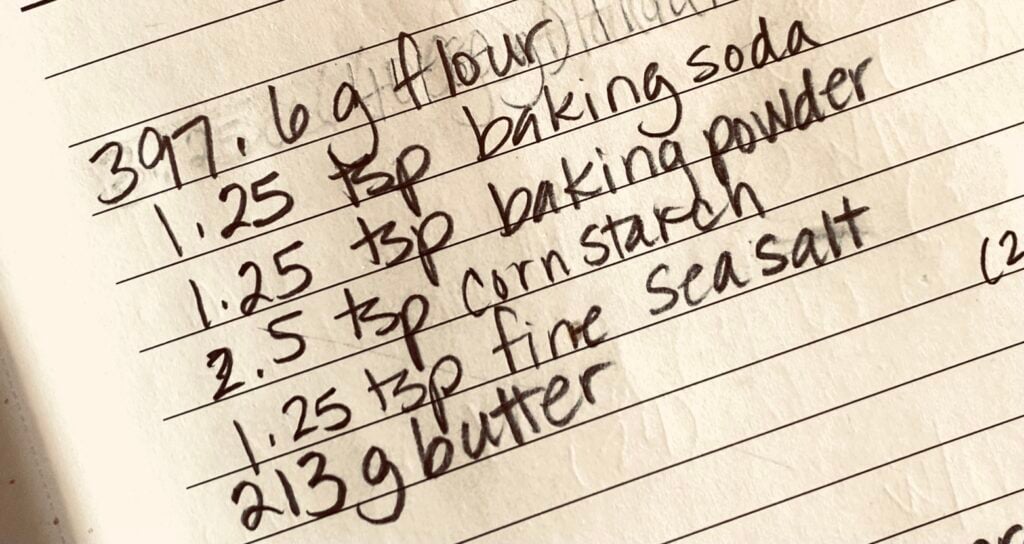
What About Eggs, Salt, and Spices?
Great question.
- Eggs: I base my measurements on 53 grams per large egg. But since eggs vary slightly in size, I typically use the number of eggs instead of a gram weight in recipes. When precision matters, I crack them into a deli container, do a quick lil scramble, and measure out exactly what I need.
- Salt, Baking Powder, Soda, Cream of Tartar, Spices: I use measuring spoons for all of these. Since their density varies and the amounts are small, volume measurements work just fine.
- Vanilla Extract: Still measured by teaspoons or tablespoons, and still precisely. Because it is decidedly *not* a flex to waste ingredients, and you can actually create adverse outcomes when you “pour until your spirit says stop.” 🌸
Tools and Resources to Make Metric Baking Easier
Baking by weight is a game-changer—but it’s even easier with the right tools. Here are a few of my favorite, most-used resources that make metric baking more seamless in my kitchen:
- Ozeri Pronto Digital Kitchen Scale: A reliable and affordable scale that makes gram-based measuring quick, accurate, and stress-free.
- Deli Cups/Containers: These make ingredient prep simple and efficient. They’re perfect for mise en place, no matter the size of the ingredient.
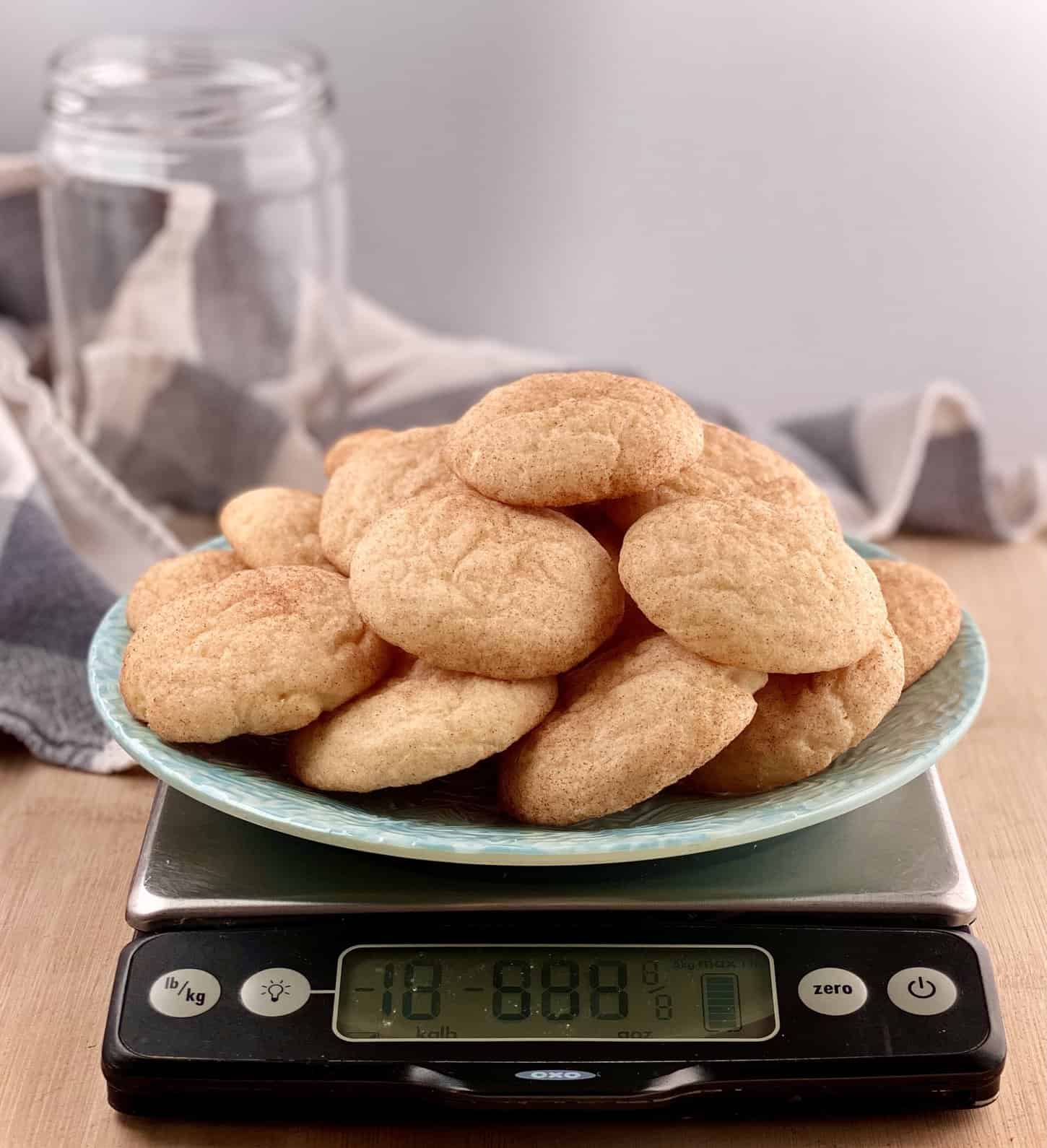
This digital kitchen scale is *the* first tool that I’ll always reach for in my kitchen.
And if you want to deepen your understanding, here are a few foundational posts from this site that will take your skills even further:
- How to Measure Ingredients: Learn the right way to measure both by volume and weight.
- The Art of Mise en Place: This is the key to baking more calmly and confidently.
- How to Scale Recipes Like a Professional: Once you’re comfortable with metric, you’ll be surprised how easy it is to double (or halve!) a recipe like a pro.
Would you like to dive even deeper into the science behind flour, fat, sugar, and more? The Baking 101 section of Begin with Butter is full of foundational ingredient science posts to guide your learning journey.
Recipes to Try with Your Digital Kitchen Scale
Ready to put your digital scale to good use? Here are five beginner-friendly recipes that are perfect for practicing your new skills—and getting delicious results:
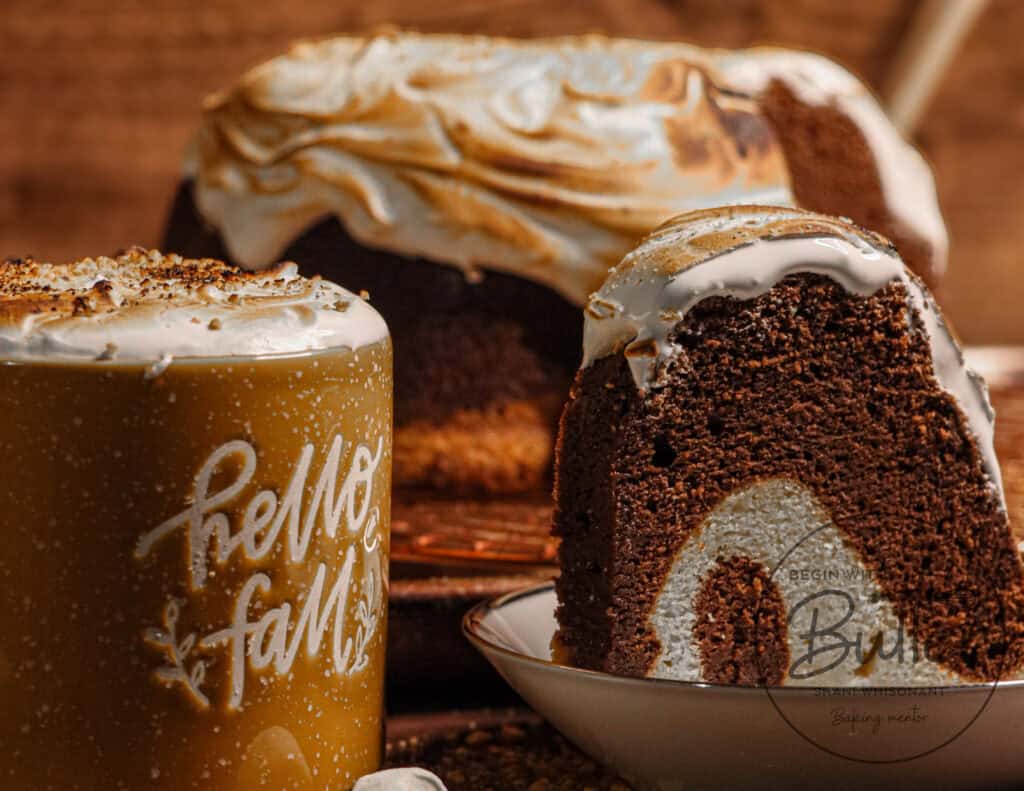
S'Mores Pound Cake: A cozy cake with a crumbly graham layer, rich chocolate, and toasted marshmallow. Precision makes the magic.

All-Butter Pie Crust: The kind of crust that makes people ask, "Wait…you made this from scratch?" Yes. You did. Because you measured it right.
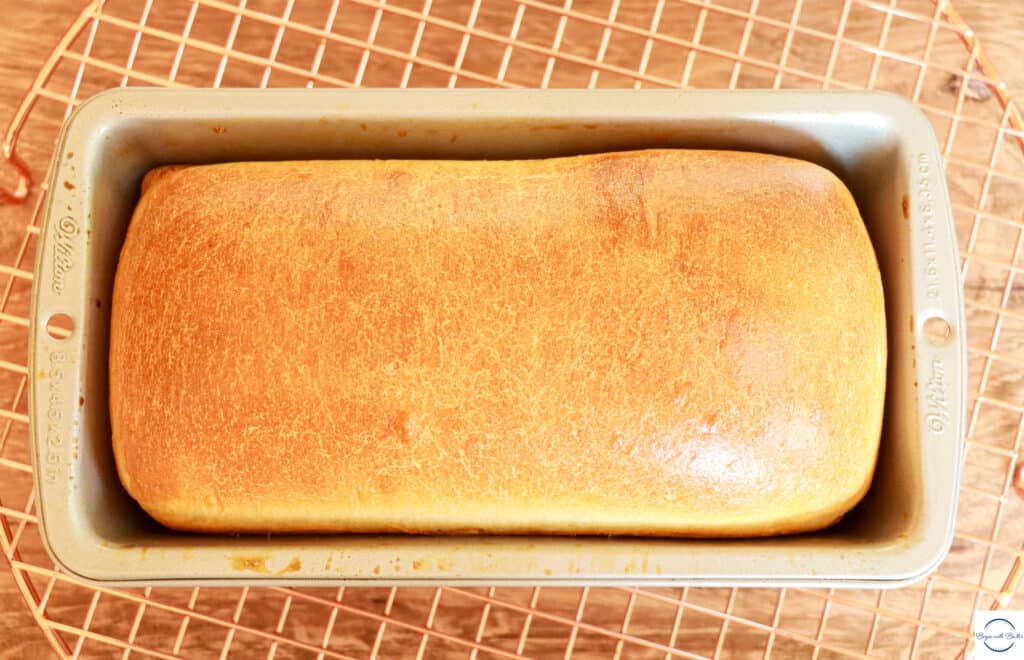
Classic Sandwich Bread: Learn how consistency in ingredient weight leads to even rise, texture, and crumb.

Chocolate Chip Cookies: Everyone’s favorite cookie—measured with confidence.
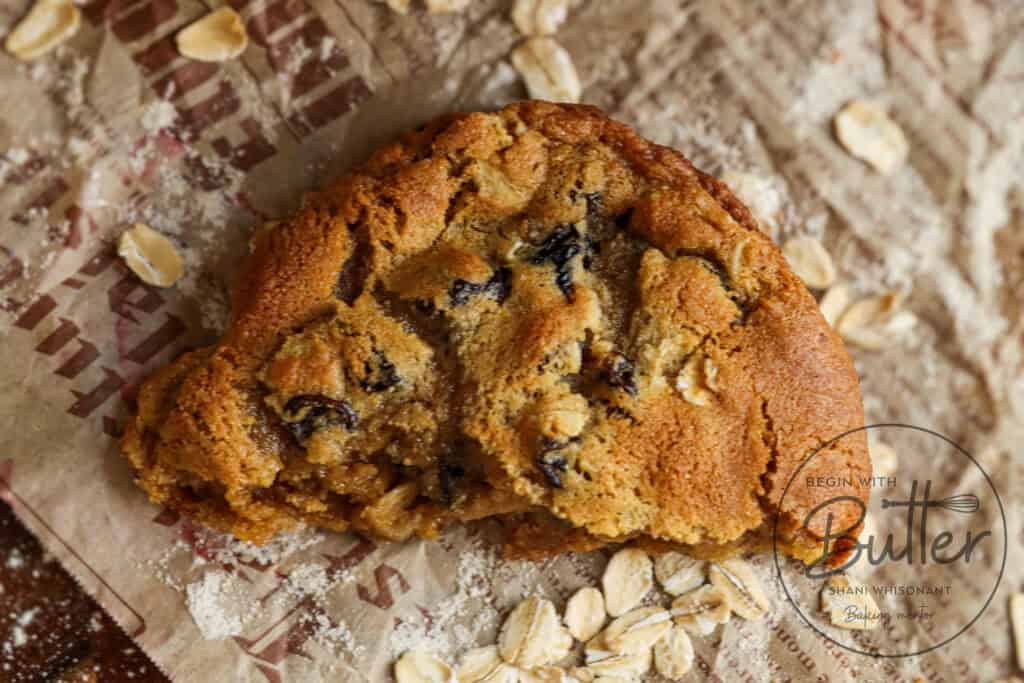
Oatmeal Raisin Cookies: Soft, chewy, and so reliable when you use your scale to get it just right.
Try one (or all!) of these to get comfortable with your kitchen scale—you’ll never look back.
Wrapping It Up
You don’t need to memorize this chart—bookmark it, print it, or screenshot it to keep it handy. I’m always updating this list as new ingredients find their way into my kitchen, and I want it to be as helpful as possible for you.
Is there an ingredient you’d love to see added? Let me know in the comments or send me a note at bakingbestie@beginwithbutter.com—I’d love to keep building this resource with you. And if you’re new to metric measuring, this is your invitation to start. Your cakes, cookies, and breads will thank you.


